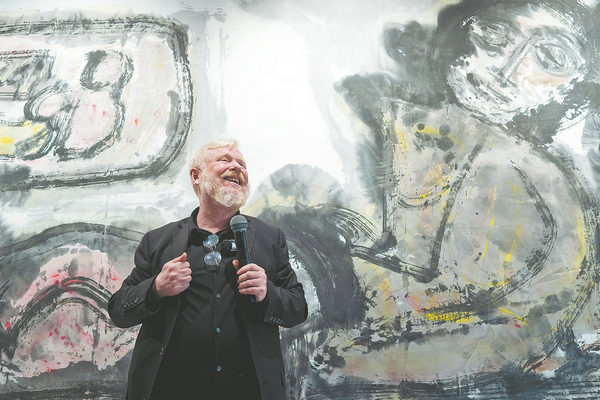

Benoit Vermander, a French professor at Fudan University's School of Philosophy in Shanghai, has found a liberatory mode of self-expression in Chinese ink paintings. Under the artist name of Bendu, Vermander — who is also known by his Chinese name Wei Mingde — is exhibiting more than 60 Chinese ink paintings, most of which he created over the past decade.
This year marks the 60th anniversary of the establishment of diplomatic ties between China and France. The exhibition, which is part of the university's celebration of this occasion, will run through Thursday on Fudan's campus.
Through the art at the exhibition, which focuses on themes such as animals, landscapes and people, visitors can learn about the artist's intimate relationship with nature and daily life, and see the integration of Western composition and Chinese ink painting skills.
Vermander's story with Chinese ink painting dates back three decades.
He was born in France in 1960, and has been fond of painting since childhood. However, vision and hearing losses made it hard for him to advance his painting skills, as his brushwork was often critiqued as not being "clean".
The turning point came in 1987, when Vermander made his first visit to China and was enchanted by Chinese calligraphy.
"When I first came to China, I was shown calligraphic works. I was really astounded, both by the meanings and the dynamics of the inscriptions," he recalls.
"I was very impressed by calligraphy as an art in which finally I could find my own way of expression. I also realized that I could create much more freely than in classical Western painting, as even the 'not clean' part of my works can be a good part of a creation with ink. So, I decided to study classical Chinese and calligraphy."
After three to four years of study, Vermander developed steady penmanship, which is a critical skill in both calligraphy and ink painting. From 1994, he shifted his focus to Chinese ink painting.